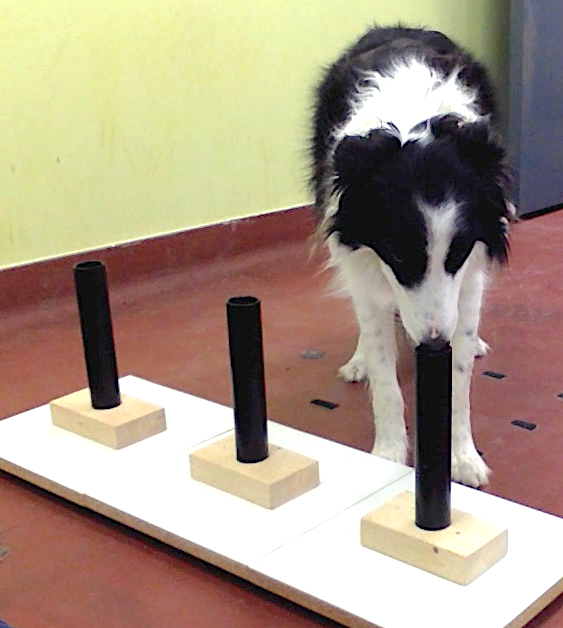Biomedical Scent Detection Dogs: Would They Pass as a Health Technology?
Main Article Content
Abstract
Biomedical scent detection dogs identify the scent profiles of diseases, such as cancer, diabetes or pathogenic micro-organisms. What the field of biomedical scent detection has been lacking, however, is the assessment of the method from the point of view of a health technology. All health technologies undergo a thorough evaluation of safety, clinical effectiveness and costs, as well as ethical, social, organizational and legal evaluations in some cases. Passing these regulatory controls is a pre-requisite before a technology is approved for use in decision-making about patient outcomes. Biomedical scent detection has a lot of attractive qualities, such as the sensitivity and specificity of the dogs’ noses, safety and relative cost-effectiveness. But the method also has various challenges, in particular regarding its clinical effectiveness. The most pertinent issues to address before the dogs would pass as a health technology are standardization the training techniques, both intra- and inter-dog reproducibility, and generalization of the detection task to early stages of disease progression. We suggest setting realistic goals in terms of what the dogs can and cannot do and a collaborative approach between clinicians and animal psychophysicists.
Downloads
Article Details
Authors will be the copyright proprietor of their own work although they have accepted to use a creative common license, specifically CC-Attribution-NonComercial-ShareAlike_4.0
References
Amundsen, T., Sundstrom, S., Buvik, T., Gederaas, O. A. and Haaverstad, R. 2014. Can dogs smell lung cancer? First study using exhaled breath and urine screening in unselected patients with suspected lung cancer. Acta Oncologica 53: 307–315.
Bomers, M. K., van Agtmael, M. A., Luik, H., Vandenbroucke-Grauls, C. M. J. E. and Smulders, Y. M. 2014. A detection dog to identify patients with Clostridium difficile infection during a hospital outbreak. Journal of Infection 69: 456–461.
Bryce, E., Zurberg, T., Zurberg, M., Shajari, S. and Roscoe, D. 2017. Identifying environmental reservoirs of Clostridium difficile with a scent detection dog: preliminary evaluation. Journal of Hospital Infection 97: 140–145.
EUnetHTA® Core Model Version 3.0. 2016. http://www.eunethta.eu/outputs/hta-core-model-30. Accessed March 31, 2018.
Food and Drug Administration. 2018. Medical Devices. https://www.fda.gov/MedicalDevices/ResourcesforYou/Consumers/default.htm. Accessed March 31, 2018.
Gadbois, S. and Reeve, C. 2014. Canine Olfaction: Scent, Sign, and Situation. In Domestic Dog Cognition and Behaviour, 3-29, ed. A. Horowitz. Berlin, Heidelberg: Springer-Verlag.
Gadbois, S. and Reeve, C. 2016.The semiotic canine: scent processing dogs as research assistants in biomedical and environmental research. Dog Behaviour 2: 26–32.
Hackner K., Errhalt P., Mueller M.R., Speiser M., Marzluf B.A., Schulheim A., Schenk P., Bilek J. and Doll T. 2016. Canine scent detection for the diagnosis of lung cancer in a screening-like situation. Journal of Breath Research. 10: 46003.
Hackner, K. and Pleil, J. 2017. Canine olfaction as an alternative to analytical instruments for disease diagnosis: Understanding ‘dog personality’ to achieve reproducible results. Journal of Breath Research. 11: 1–5.
Hardin, D. S., Anderson, W. & Cattet, J. 2015. Dogs can be successfully trained to alert to hypoglycemia samples from patients with type 1 diabetes. Diabetes Therapy 6: 509–517.
Health Technology Assessment International (HTAi). 2018. https://www.htai.org/. Accessed March 31, 2018.
International Network of Agencies for Health Technology Assessment (INAHTA). 2018. http://www.inahta.org/. Accessed March 31, 2018.
Jezierski, T., Walczak, M., Ligor, T., Rudnicka, J. and Buszewski, B. 2015. Study of the art: Canine olfaction used for cancer detection on the basis of breath odour. Perspectives and limitations. Journal of Breath Research. 9: 27001.
Koskinen, A., Koskinen, H., Bäck, L., Saxen, H. and Klockars, T. 2017. A detection dog for paediatric urinary tract infection caused by Escherichia coli. Infectious Diseases 4235: 1–4.
Moser, E. & McCulloch, M. 2010. Canine scent detection of human cancers: A review of methods and accuracy. Journal of Veterinary Behavior 5: 145–152.
Reeve, C., Wentzell P., Wielens, B., Jones, C., Stehouwer, K. and Gadbois S. 2017. Assessing individual performance and maintaining breath sample integrity in biomedical detection dogs. Behaviuoral Processes doi:10.1016/j.beproc.2017.08.008.
World Health Organization. 2018. What is a health technology? http://www.who.int/health-technology-assessment/about/healthtechnology/en/. Accessed March 31, 2018.

